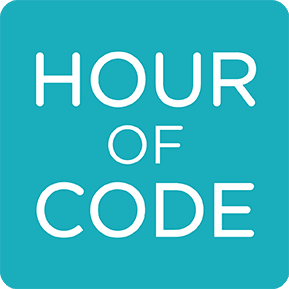Supporting students with disabilities for the Hour of Code
Anyone can try an Hour of Code during Computer Science Education Week. Often, students with autism, ADHD or other learning differences find they love programming. Encourage all the students in your classroom to give it a try! In setting up the experience for your classroom, reward participation rather than completion. You can give everyone a certificate no matter how many puzzles or challenges they complete within the hour. Pair programming is another great way to teach collaboration and have students work together to solve problems.
Fit a variety of needs with unplugged and online tutorials
In finding the right activity for everyone in your class, consider both online and “unplugged” options that do not require computers. Unplugged activities allow students to get hands on with computer science concepts. The Big Event puts teachers in control over the actions of students, allowing for a great opportunity to tailor the content to the abilities of each student.
For other students, the accommodations available on the computer may allow them to participate better than an unplugged choice. For example, students who are deaf or hard of hearing can participate fully in the online tutorials.
The most inclusive choice may also depend on whether you have an accessible computer lab or laptops.
For example, do your students have reduced mobility or dexterity? If all your students have access to technology at your school, ask your students or tech teacher what accommodations your students typically use with the computers available.
Sensory Impairments
Students who are blind or low vision
For students who use a screen reader, the Quorum tutorial for beginners or the Quorum tutorial for comfortable students is a great place to start. Quorum started as an interpreted language designed to be accessible to screen reader users. Eventually, it became a general purpose programming language designed for any user. You can use these Hour of Code tutorials with your entire classroom. And, if you want to go beyond an Hour of Code, the team at Quorum has additional tools and curriculum.
If your student uses other accommodations in technology classes, you may use those to help with Hour of Code as well. These can include larger monitors, software screen magnification, high contrast settings in their operating system, voice control and more.
Students who are deaf or hard of hearing
The Code.org tutorials are all designed to be used with or without sound. All the videos have captions. Some students can also benefit from headphones set to a higher volume.
Learn more
To learn more about computer science education and special needs students, we recommend this online book.
